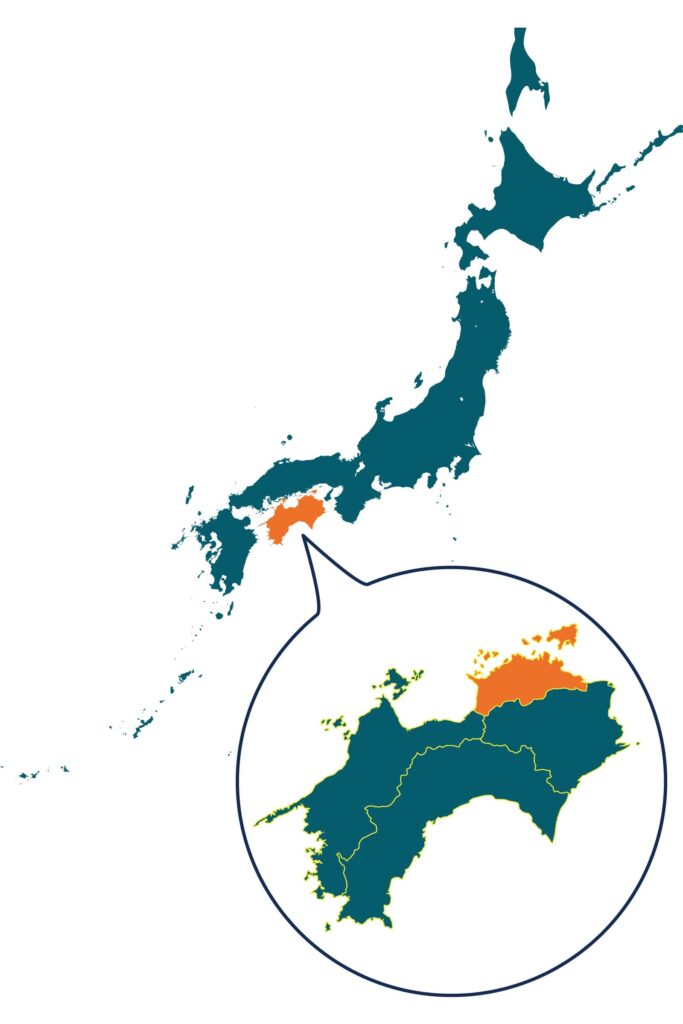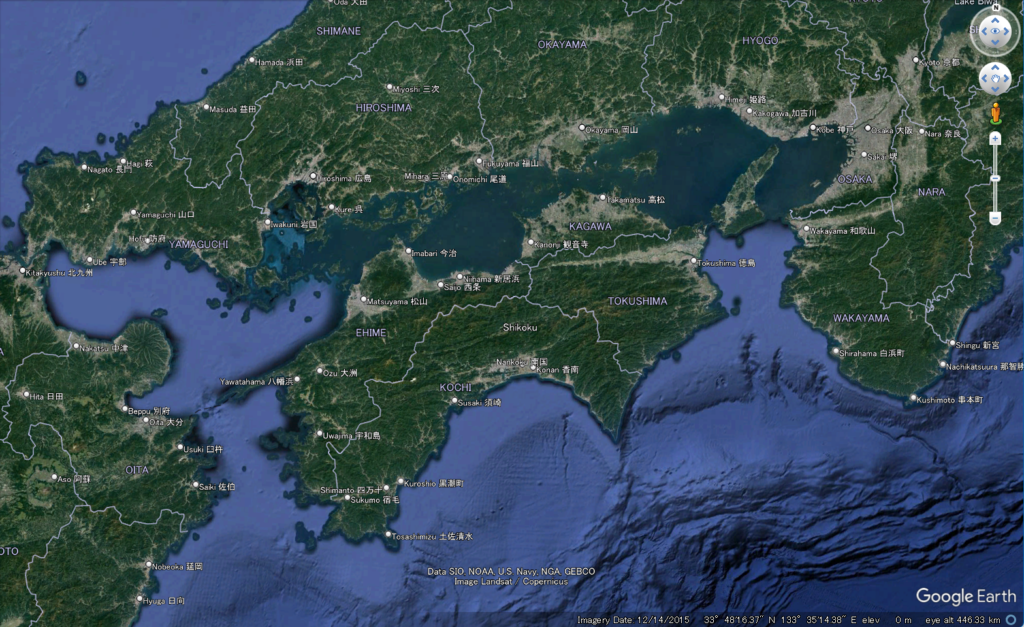
Our Location & Artisanal Heritage
The Region of Shikoku:
We are based in Takamatsu, the capital city of Kagawa prefecture in the Shikoku region of Japan. The Shikoku region is located mid-southwest of Japan and covers 18,800 square kilometers. To give you a sense of scale, it is slightly larger than the U.S. state of Connecticut and 1.4 times the size of Sicily in Italy. The region consists of the main island of Shikoku and the surrounding archipelagos and small islands.

Heritage Crafts We See today:
Both geographic and historical factors have driven our ancestors in Shikoku to craft various items, ranging from necessities to enriching daily life. While many crafts were once prevalent in the region, only a select few are seen today and have earned the distinction of being designated local or national heritage crafts. Sadly, these cherished heritage crafts face the looming threat of extinction, primarily due to a rapidly shrinking market.
At “KoLe SHIKOKU, Japan,” we are on a mission to prevent the loss of these precious crafts by reimagining their role in modern-day life. We seek to integrate heritage craftsmanship into contemporary lifestyles. To achieve this, we value your unique and innovative ideas for exploring new applications for Shikoku’s heritage craftsmanship.
Cultural and Scenery Diversity of Shikoku
| Geographic Causes > Mountains > Facing two seas > Diversity of Products | Historical Cause | Uniqueness of Kagawa |
Geographic Causes

Mountains:
Shikoku Island boasts a stunning landscape, with approximately 80% covered in mountainous terrain. The highest peak rises to 1,982 meters above sea level. These mountains play a pivotal role in Shikoku’s geography, effectively dividing the island into northern and southern regions. Consequently, the northern and southern parts of Shikoku exhibit distinct climates and weather patterns.”
Facing two seas:
The diversity in climates and weather on Shikoku Island is significantly influenced by its geographical positioning. The northern shoreline faces the Seto Inland Sea, known for its calm waters and numerous archipelagos, often mistaken for a river due to its narrowness from north to south. In contrast, the southern shoreline faces the vast and dynamic Pacific Ocean.
Diversity of Products:
Shikoku’s diverse geography gives rise to distinct agricultural and marine products in its northern and southern regions. Furthermore, the availability of flat lands in various areas influences the range of crops that can be grown, contributing to a rich tapestry of food cultures and local traditions encompassing tools, materials, methods, beliefs, rituals, and annual events.
| Geographic Causes > Mountains > Facing two seas > Diversity of Products | Historical Cause | Uniqueness of Kagawa |
Historical Cause:
In this relatively compact region, consisting of four prefectures—Tokushima, Kochi, Ehime, and Kagawa (our base)—each prefecture boasts a distinct culture shaped by historical influences, including governance, until the end of the Edo period (1603-1868). This cultural diversity is vividly reflected in the local manufacturing industries, which served various purposes, from constructing facilities for local lords to producing goods that bolstered the regional economy or were offered as tributes to the nation’s leaders.
Uniqueness of Kagawa:
Kagawa, situated in the northeast of Shikoku, stands out for its exceptional geography. While 80% of Shikoku Island is mountainous, Kagawa is a distinctive exception. A glance at the Shikoku map reveals that Kagawa boasts a significantly higher proportion of flat land compared to other prefectures in the region. This unique geography has given rise to distinctive cultures and customs in Shikoku.
Moreover, Kagawa has its own compelling story as to why heritage crafts have thrived in this rural part of Japan. We delve into these narratives on our blog and social media platforms, sharing the rich heritage of Kagawa in easily digestible formats.

| page top | About Us | What We do | Curated Items | Contact |